Business: Mioveni / Global
Start your engines
Smart and understated, Dacia is going from strength to strength. We visit its plant to see how the car brand is driving success.
The rumble and thud of heavy industry is overwhelming. Inside the stamping department at Dacia’s production plant in Mioveni, Romania, sheet metal is being sandwiched under pressure to create doors for the car brand’s new Duster model. For the robotic machinery to do its thing, huge, heavy moulds are being manoeuvred across the hangar by a yellow crane arm that spans the entire 15-metre length of the roof. “This is the high speed line,” shouts Alina Predescu, the department’s senior manager and a Dacia employee for the past 15 years, referencing the equipment on display. The combined 12 lines that operate here produce 4.5 million pieces a month. Next, they’re passed to the body shop where the cars start to take form.
To call Mioveni a production hub would be an understatement. Opened in 1968 during the early years of Nicolae Ceausescu’s Socialist Republic of Romania, the Dacia factory is a beast that almost never sleeps. Operating 24 hours a day over three shifts, it rests only on Sundays. A car is produced here every 55 seconds, while 350,000 cars roll off its production line each year. The figures are a testament to the phenomenal success of Dacia in recent years. The brand was long seen as a budget, no-frills player but has morphed into much more. Dacia now sells more than 650,000 cars a year and its Sandero recently became the best-selling car in Europe. The relationship, though, is reciprocal; Dacia wouldn’t be where it is today without its historic mothership plant, located about a 90-minute drive northwest of the capital, Bucharest.
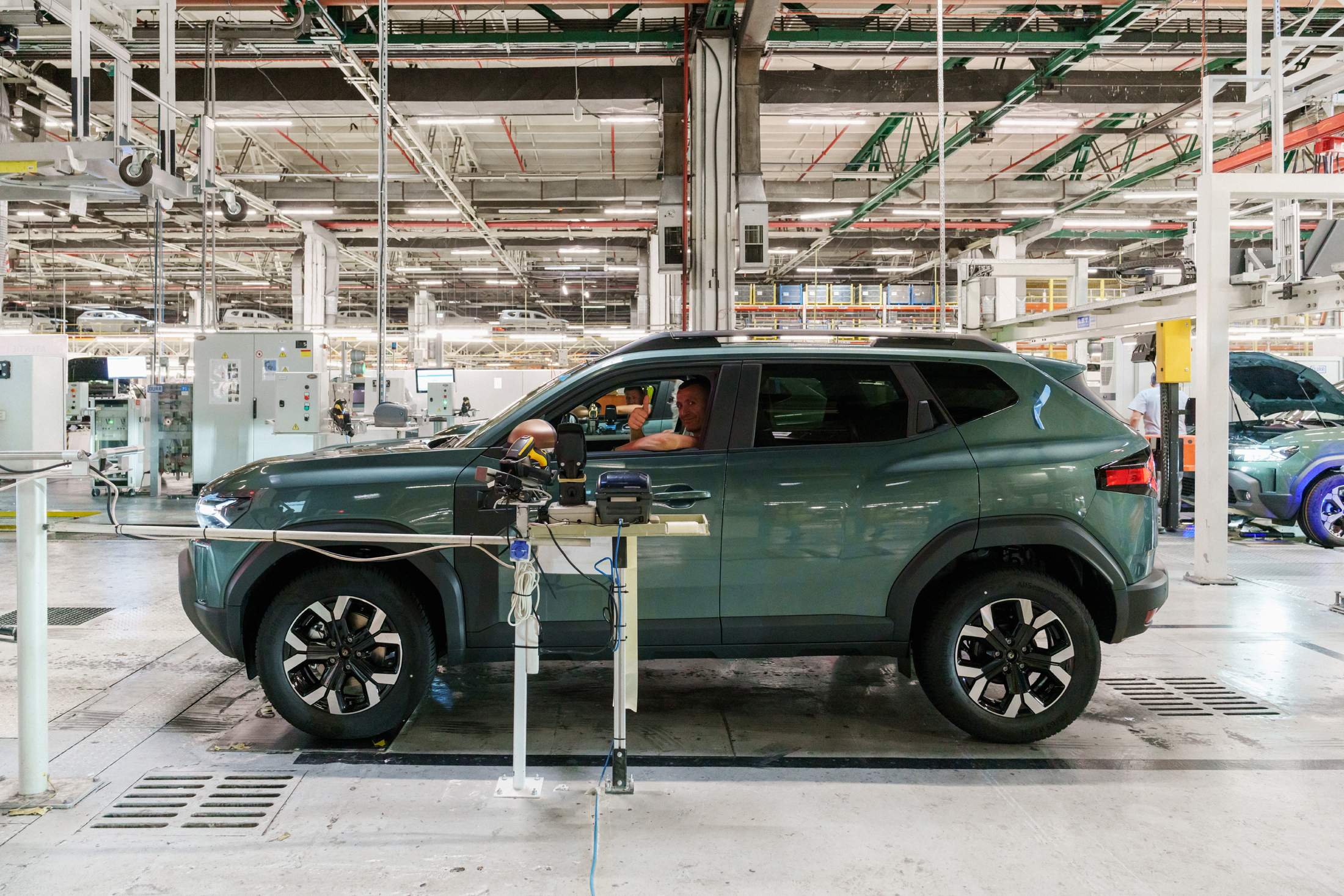

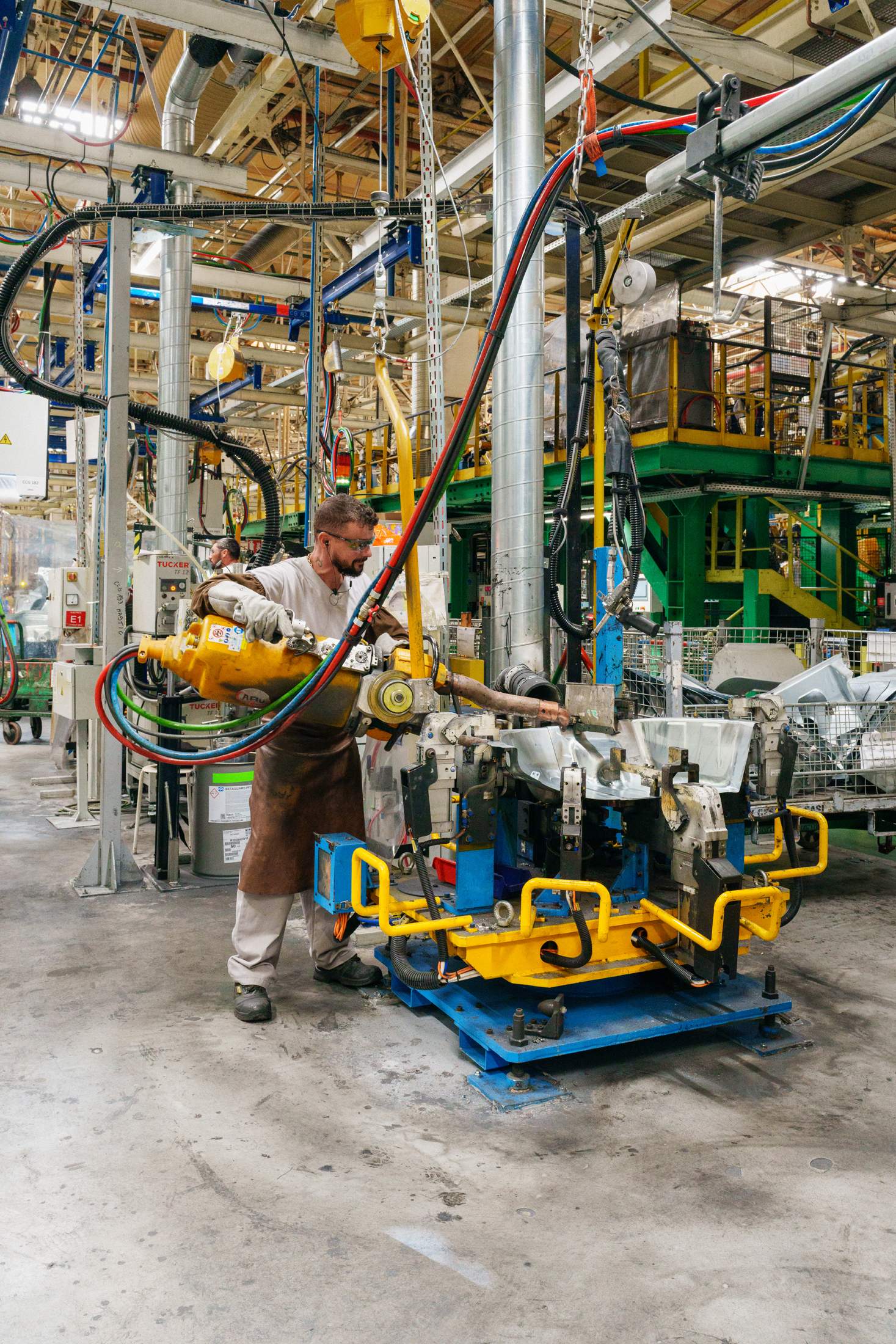
When monocle visits the plant – a series of grey, flat-roofed buildings surrounded by large car parks – we’re told to imagine it more as a town than a factory. On a map, its 288 hectares look almost as big as Mioveni itself, which sits below the plant’s slightly raised vantage point next to woodland. Before Dacia arrived, Mioveni (pronounced with a short “I” at the end) was a sleepy village of about 6,000 inhabitants. Today the automotive town is home to 30,000 people. Many Mioveni residents have either worked here or know someone who has – attracted by what one employee calls a job opportunity “gold mine”. With revenue of €5bn a year, the plant represents some 2 per cent of Romania’s gdp and about 2 per cent of its exports.
Dacia began by mass-producing cars for the local market through a licensing agreement with Renault. Car kits were dispatched from France and assembled in Romania under a local brand name, though the plant shifted to making its own parts not long after. Dacia’s debut model, the 1100, was based on the Renault 8 and its second car on the Renault 12. That relationship came full circle in 1999, when the Paris-based multinational bought the brand. Renault’s ceo at time, Louis Schweitzer, had been to Russia and seen the success of Lada. He was convinced that there was a worldwide gap in the market for Dacia, especially in post-Iron Curtain Eastern Europe.
With Renault’s arrival, efficiencies were greatly increased. monocle is anecdotally told that before that, in the 1970s and 1980s, 30,000 employees were producing 100,000 cars a year, with capacity tripling at the plant between 2004 and 2010. “The factory has changed each year,” says the plant’s general manager, Sile Fulga, who has been here since 1987, wearing a Dacia logo wristband to protect his watch. “In 2000, we didn’t have any robots.”
Underlying Dacia’s expansion has been an idea that counters the trends of the automobile industry. There has been a push back against the expensive bells-and-whistles cars that had already started to come onto the market at the end of the 1990s. “The idea was to say, what if we have a piece of the group that would not play the game of always more,” Dacia’s ceo Denis le Vot, also group chief supply chain officer, tells monocle. Under Renault’s stewardship, Dacia launched the no-nonsense Logan model in saloon and estate versions, which came with wind-down windows and no air conditioning.
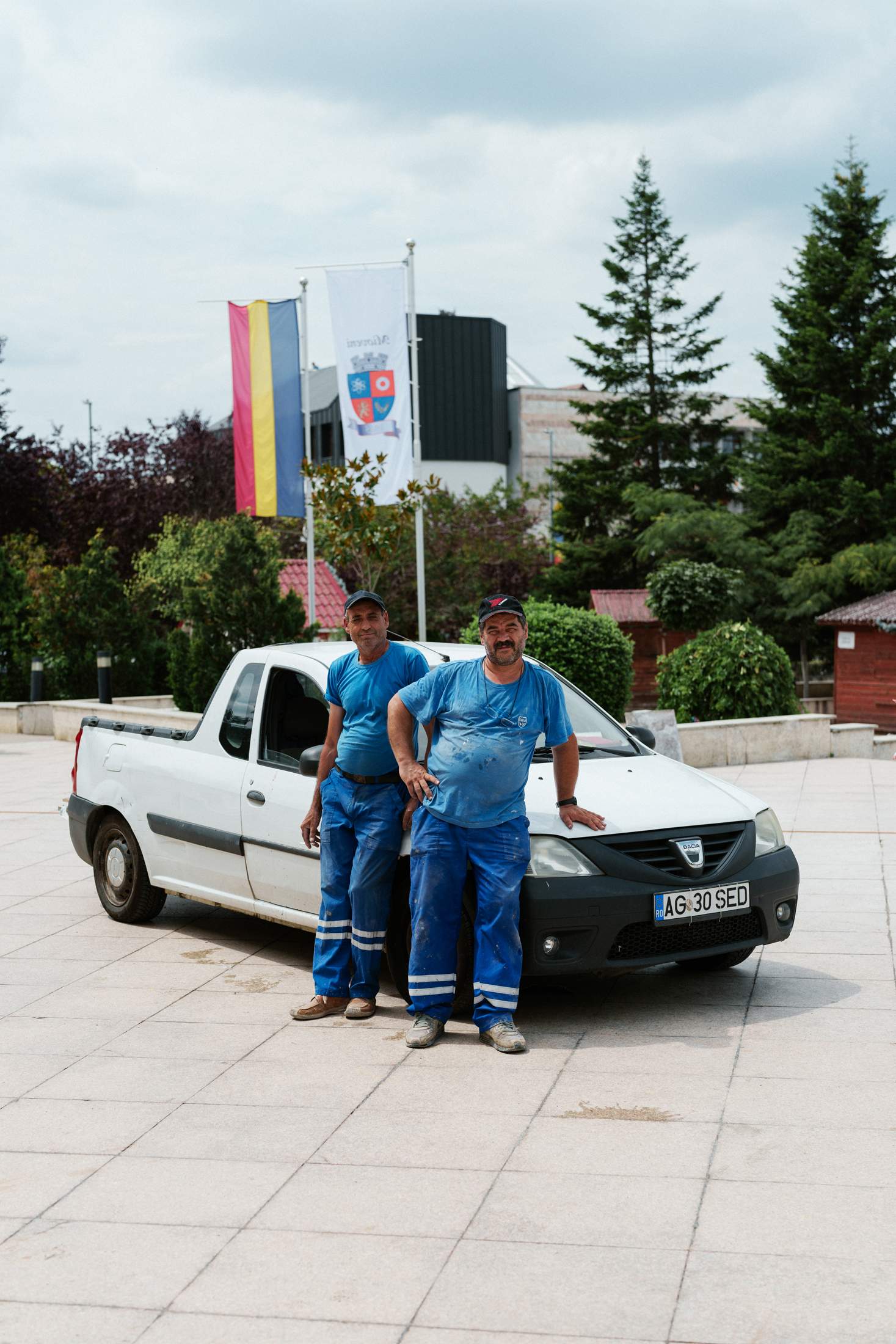
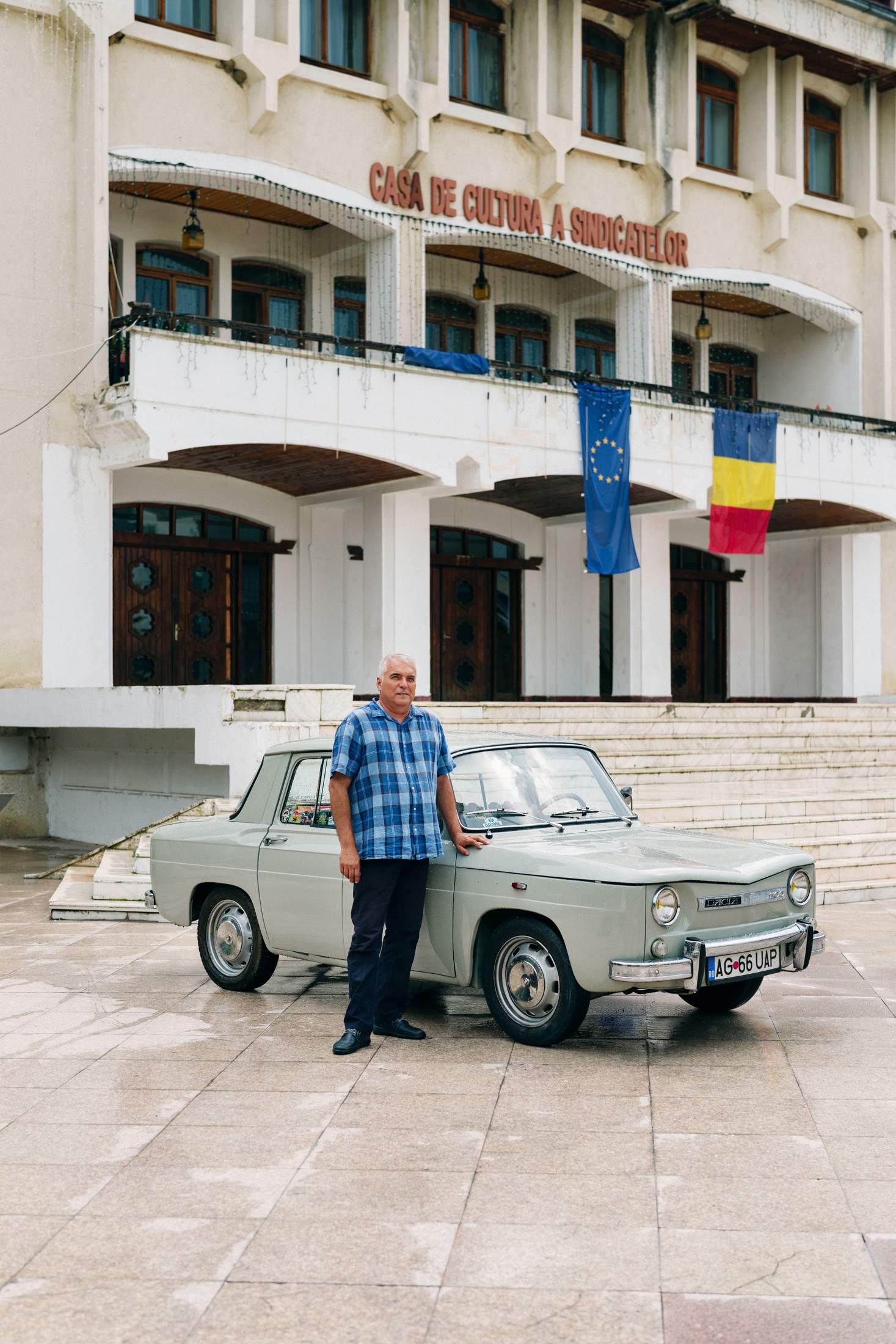

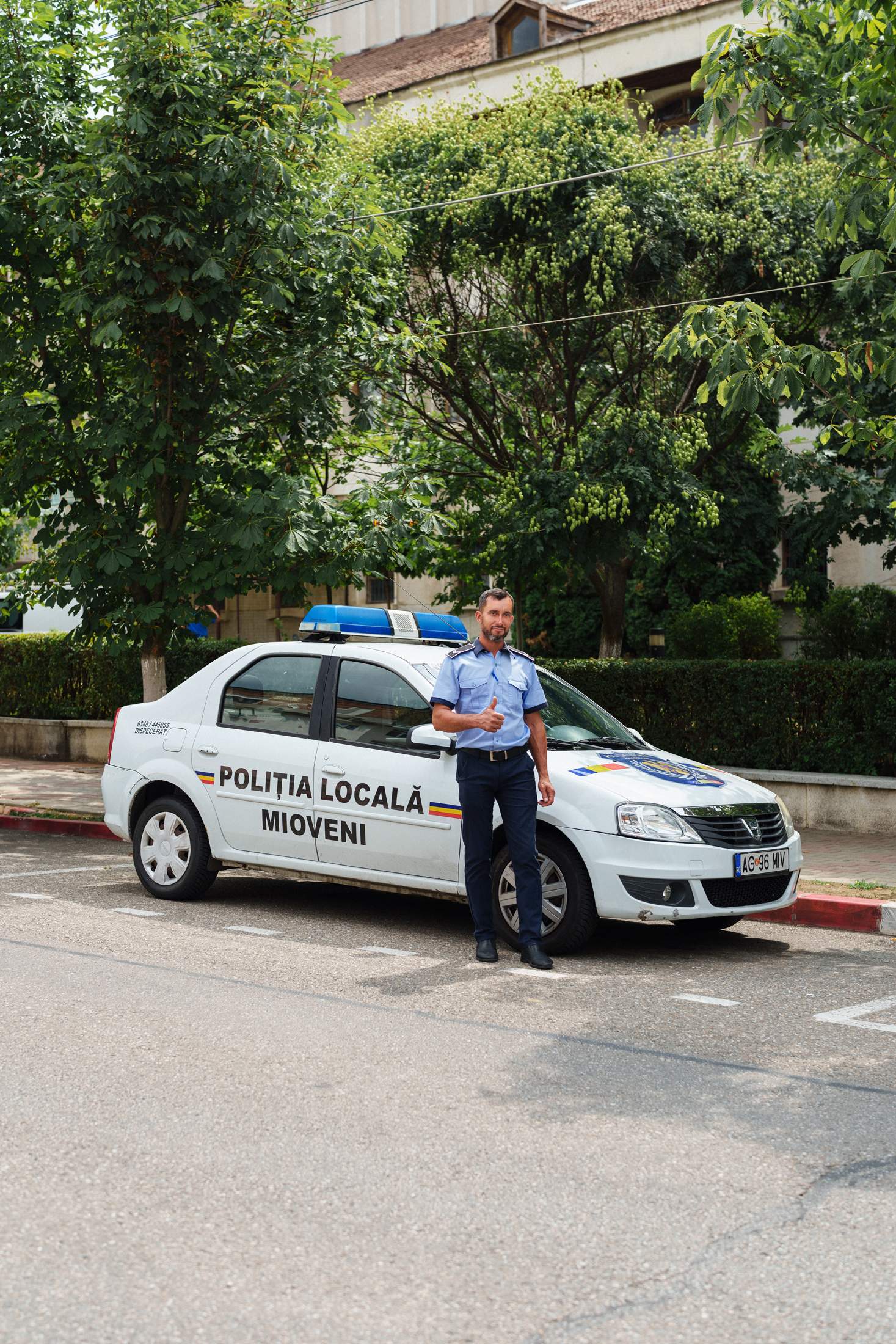
The car bodies being welded together by automated arms when monocle visits are very different from those of the original Logan. Given how popular suvs are worldwide – representing more than half of all sales in Europe – Dacia’s decision to pivot to an suv look for most of its cars has proved prescient, even if many of them are smaller superminis, compact suvs and crossovers. But Le Vot says that, though some aspects have changed, “the spirit is the same”. The less-is-more concept, for example, still prevails.
Some might call them under-equipped but Le Vot prefers to say that Dacia produces cars with only the essential features. “We like to quit anything that is not strictly necessary,” he says, adding that the idea of “essentiality” is nonetheless shifting all the time given the types of vehicles coming onto the secondhand market, often a direct competitor of Dacia. Its cars feature manually adjusted seating, plastic over leather upholstery and understated screens; air conditioning, once deemed a luxury, is now part of the package. For a long time, Dacia also shunned lane-keep assist – the sometimes tedious feature that steers you back onto the road should you drift outside the lines – as too much technology, but new EU safety regulations mean that this is now part of the brand’s essentiality too.
One of the less visible reasons why Dacia has become a superstar of the region – and beyond – is the way it has been run by Renault. Though brand studios in France might get design input, Dacia has been allowed to keep plenty of devolved powers, maintaining a 3,000-strong engineering corps in Bucharest, as well as a Romanian design team. There is a strong focus on what the Dacia ceo calls “design to cost”. Dacia cars are created with a sharp focus on the core things that matter to consumers in a process meant to separate real value from unnecessary technical glitz. Despite its range of cars, with the exception of its single electric model, Dacia also keeps the same platform across its catalogue – all the bits out of the consumer’s view, including the bulk of the body structure, axles and even a lot of the powertrains – which lowers costs. Lastly, Dacia taps Renault Group HQ and its r&d, which Le Vot refers to as “big brother”, to borrow technology developed years earlier.
The city of Mioveni is dominated by the St Peter and Paul Cathedral, with its distinct orthodox spires, which sits just off a main thoroughfare. Inaugurated little more than a decade ago, it’s one of the many buildings constructed here since the 1970s – many of them nondescript communist-era blocks – as the population started to grow. Walking around town, the influence of Dacia is difficult to miss. The yellow taxis driving around the streets are Dacias, as are the police cars, both Logan models. The workers in blue overalls fixing up the square arrive in a Dacia pick-up, while a family of three we talk to is driving a workhorse Dacia Solenza from 2003 that needs pushing to get its engine going.
Later, we meet members of a local Dacia classic car club, all eager to show off their vintage models. Catalin Francu was a driver for Dacia in the 1980s and 1990s during the company’s original foray into rally car racing (Dacia recently announced that it would be joining Dakar Rally from 2025). Like many people, for Francu there’s a pride and perhaps even sentimentality attached to a brand that is still seen as indivisible from Romania itself. “I was born with Dacia,” he says. “And for many Romanians, it’s the same thing.” Both Alin Stanciu, owner of a 2003 Dacia 1310 estate, and Catalin Filip, whose 1969 1100 turns plenty of heads as people walk past, agree. Stanciu talks about a “nostalgia” for Dacia that clearly comes from where he has grown up. “It’s normal because everyone has a connection to the plant,” he says. “Four members of my family worked there.”
Still, present-day Dacia wants to be seen as much more than Romanian, even if ceo Le Vot calls it the heart of the brand. “Dacia is Romanian but Dacia goes way beyond Romania,” he says. “The uniqueness of the brand is not specifically the geography, though the history is linked to the geography.” For one, Romania is no longer the top sales market, with top spot going to France followed by Italy. The Mioveni plant also isn’t the only factory producing cars. Le Vot is quick to add that Mioveni has a “bright future” but there are two plants in Morocco that make what the ceo calls the “low drive”, more budget cars such as the Sandero and Logan, as well as the seven-seater Jogster. The Mioveni plant focuses on higher-end cars, including the Duster.
Part of that gradual shift in brand orientation involved a redesign of the Dacia logo in 2021, which started to feature on new cars from the following year. It’s one of the many logo iterations we see on Dacias during our time in Romania. The kissing “D” and “C” feels modern and has been coupled with Dacia moving away from its traditional blue to an olive green. This has been complemented by lifestyle advertising that makes Dacia feel outdoorsy. Le Vot, quoting the brand markers, says that it’s all part of being “robust and outdoors, eco smart and essential but cool”.
Alongside the brand’s first electric car, the China-made Spring, which hit the UK in October (a first-generation model has been available in other markets for longer), 2025 will see the release of a large suv, the Bigster – a bid to cash in on that lucrative segment of the market. It will be made right here in Mioveni, from the metal stamping to the final conveyor-belt quality control.
Alongside the evolving look and feel, Le Vot argues that the way Dacia is perceived continues to shift. While he says that Dacia is “still the cheapest on the block” for those who want it, buyers aren’t just secondhand car owners looking for the only new car they can afford. Premium brands have become so expensive, he says, that plenty of new Dacia owners have gravitated from higher-end players. It means that 70 per cent of Dacia’s sales are now made up of its most expensive models. “The market is coming to us,” he says. And with it, Dacia’s evolution continues apace. —
Sizing up
Renault has seen growth in medium and large-sized cars, and Dacia wants a piece of the action. Its Bigster is out next year and two more similar-sized bodies are planned for the near future.


